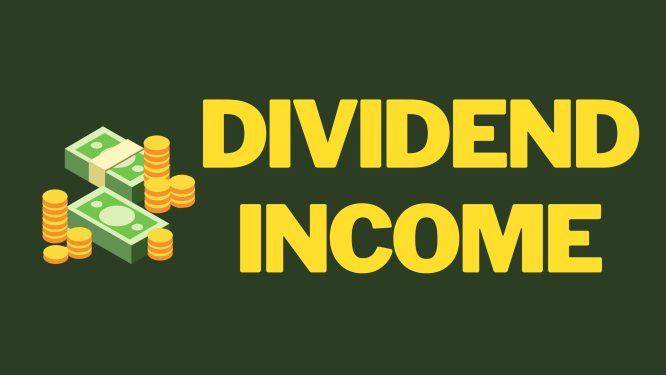Dividend income and its Taxability
Trading Strategies
What is a Dividend?
A dividend is often the amount that a business distributes to its shareholders from its profits. You will get paid a dividend if you invest in mutual funds, ULIPs, or stocks. The board of directors of a firm determines its dividend, and the shareholders must approve it. A firm is not required to pay dividends.
Investment in dividend
Investing in dividend is one of the best financial strategies. Less volatility has allowed dividend equities to outperform. The appeal of dividends is that they pay out regardless of market performance.
In a contract between the business and its shareholders, a dividend can be a percentage of the profits or a sum deducted from reserves. Dividend, which means entire divisible sum, is the root word of the word dividend. Usually given out in the form of cash or by investing in more stocks, dividends are disbursed on a quarterly basis. Dividend-paying companies sometimes draw investors with a lower risk tolerance because of their decreased volatility. The board of directors of the corporation declares a dividend. You will get paid a dividend if you invest in mutual funds, ULIPs, or stocks.
Sources of Dividend
Dividends from current year profits A company cannot declare a dividend from current year profits unless it satisfies each of the following conditions:
Depreciation Depreciation must be deducted from the depreciable assets in line with the prescribed rates or their useful life prior to the declaration of a dividend.
Reserve Prior to declaring or disbursing a dividend, a company's profit must be allocated in part to reserves. The business must always remember to take the carried-forward loss from the previous year out of the current year's profits before issuing a dividend.
Dividend declaration
Dividend Rate: The total dividend amount announced cannot exceed the average of the sums declared by it in the three years before that particular year. Nevertheless, a company is free from this sub-rule if it has not declared a dividend in any of the three prior fiscal years.
Dividend Amount: According to the most current audited financial accounts, a tenth of the company's paid-up share capital and free reserves cannot be deducted as the total amount to be taken from such accumulated earnings.
Reduction of Losses: In certain cases, a company may not make a profit. In these cases, a dividend may be distributed in compliance with the principles that follow.
Timeline for payment of dividend
Within five days of the dividend's announcement, the full amount, including the interim dividend, must be placed in a different account with a designated bank. Declared dividends must be paid out within thirty days of the declaration. If a dividend is transferred but is not paid or claimed within seven days of the deadline, it will be credited to an unclaimed or unpaid dividend account that was formed with a designated bank. The business must write a statement with each person's name, last known address, and the unpaid dividend that needs to be paid within ninety days of any money being transferred to the unclaimed dividend or unpaid dividend account. The statement should then be placed in the appropriate location.
Types of dividend
Cash dividend: The most popular kind of dividend is a cash dividend. A certain amount of money is transferred in order to pay the dividend amount in this kind of payout. Either cash or cheque and/or electronic transmission of funds are possible.
Stock dividend- Stock dividends are defined as dividends that are distributed to current shareholders in the form of a specific number of shares without any kind of consideration.
Scrip dividend- A scrip dividend is one in which the business issues transferable promissory notes to its shareholders, guaranteeing that the notes will be redeemed for the full amount of the dividend at a later time. The given notification could or might not be subject to interest.
Property dividend- Rather than giving out cash directly, property dividends are paid out using non-monetary items like assets, inventories, etc. When the corporation does not have sufficient cash on hand to pay dividends, it pays this dividend.
Liquidating dividend- The liquidating dividend is the payout that the company typically announces when it is going through liquidation, and the directors choose to reimburse the shareholders for their initial investment in the firm's capital.
Important dividend dates
1. Date of Declaration The date the board of directors declares and authorizes a dividend payment is known as the declaration date. The declaration specifies the record date and payment date in addition to the amount of the dividend that will be paid out.
2. Ex-Dividend Date The initial trading day of a stock without a dividend is known as the ex-dividend date. The date on which the firm's shares are traded on the stock exchange is the ex-dividend date, not the corporations.
3. Documentation Date To be eligible for a dividend, an investment must be listed on the company's books as of the record date, sometimes referred to as the date of record.
Dividend distribution tax
The years have seen changes in the taxability of dividend income. A dividend received by a shareholder from a domestic company is tax-free for the shareholders up until Assessment Year 2020–2021. Company dividend distribution tax was due in this instance. Dividends are now taxable in the hands of investors due to the Finance Act 2020's repeal of the Dividend Distribution Tax idea.
Is the Dividend income taxable?
Any dividend that is obtained through equities, mutual funds, or direct equity investments is subject to taxation. The dividend receiver now bears the responsibility of paying taxes instead of the dividend payer. TDS must be subtracted from the dividend amount prior to payout by the dividend-paying firm or mutual fund house. The residence address affects the TDS rates as well.
When Should Dividend Income Be Taxed?
According to Section 8 of the Act, the final dividend—including the considered dividend—must be paid in taxes in the year that the firm declares, distributes, or pays it, whichever comes first. In contrast, an interim dividend is subject to taxation in the year prior to the one in which the shareholder receives the full amount of the dividend from the corporation. As stated differently, an interim dividend is subject to taxation based on receipts.
Indian Dividend Tax Rates
The occupation of the receiver determines the dividend tax. The dividend income that the shareholder receives is subject to taxation under business income if he trades equities. If the shareholder is merely an investor, all dividend income received from foreign or Indian corporations is subject to income from other sources of taxation. The applicable income tax rate for the shareholder will be the tax rate. According to Section 194, an Indian company must deduct tax at the rate of 10% from dividends distributed to resident shareholders if the total amount of dividends distributed or paid to a shareholder during the financial year exceeds Rs. 5,000.
Dividend Tax Rate for Indian Non-Resident Individuals (NRI)
The tax rate is a flat 20% of income for non-resident Indians (NRIs) who have invested in Indian enterprises. The provisions of India's Double Taxation Avoidance Agreement, which guarantees that the same income is not taxed twice, apply to the taxation of dividends for non-resident Indians. This implies that NRIs are exempt from paying taxes on income received from dividends received abroad, and vice versa. Should the amount be subject to two taxes, the investor may be eligible for double taxation relief.
Dividend income tax in India
Any business that distributes dividends to Indian residents is required to subtract 10% as TDS from the payout amount. This regulation is solely relevant in cases where the dividend sum exceeds ₹ 5000. TDS shall be withheld at a fixed rate of 20% from any dividend income received by nonresident individuals.
Dividends between corporations
Dividend taxation has been transferred from corporations to shareholders since the beginning of AY 2020–21. In order to eliminate the cascade impact in the event that a domestic firm gets a dividend from another domestic company, the government has added a new section 80M to the Act.
What is incorporate dividend?
Dividends that a company receives because it owns shares in another company are known as inter-corporate dividends. It is paid between firms
A new section 80M has been implemented by the Indian government under the Act to eliminate the cascade impact that occurs when a domestic firm gets a dividend from another domestic company. These businesses both declare and receive dividends simultaneously. If dividends are paid out one month prior to the filing date, then the amount received can be deducted. Dividends paid out on or after April 1, 2020, are covered by this section. The board of directors of the corporation announces dividends following shareholder approval. Quarterly dividend payments are common, and they can be made in cash or by reinvesting the proceeds in more equities. Do comment your thoughts and views on this blog


